
When I am not running around all over the city covering news stories, I spend my time taking pictures of birds. Every weekend, I get up early and go to places where I could get glimpses of birds that I have not captured. This weekend, I woke up early and went to the Taudaha lake in Chobhar on the southern outskirts of Kathmandu after hearing birdwatchers had seen a flock of great cormorants.
Great cormorants, known as jalewa in Nepali, are one of the widest-spread fish-eating birds on earth. They are found in Asia, Europe, Africa, Oceania and North America. They can be both residents and migratory.
In Kathmandu, they are often seen during the winter months. Found in elevation up to 1,370 m above sea level, they are seen around lakes and rivers. Their sightings can also be seen around Koshi Tappu Wildlife Reserve.

In Kathmandu, they can be seen around Taudaha lake, a small lake in the south of Kathmandu where they are seen swimming and fishing.
Its diet is exclusively fish which they swallow whole.
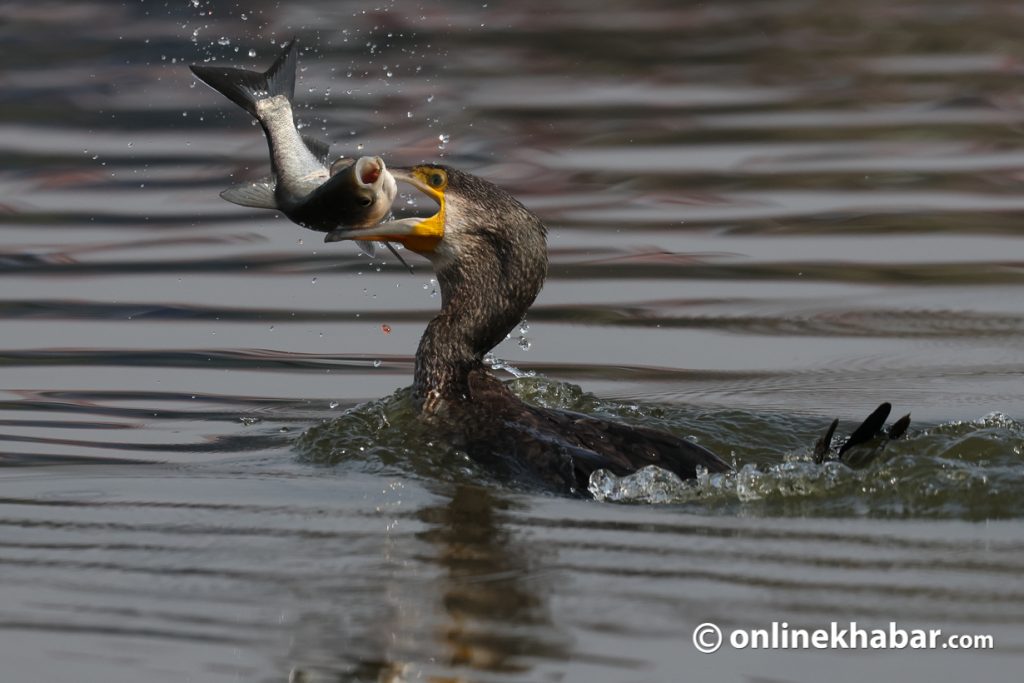
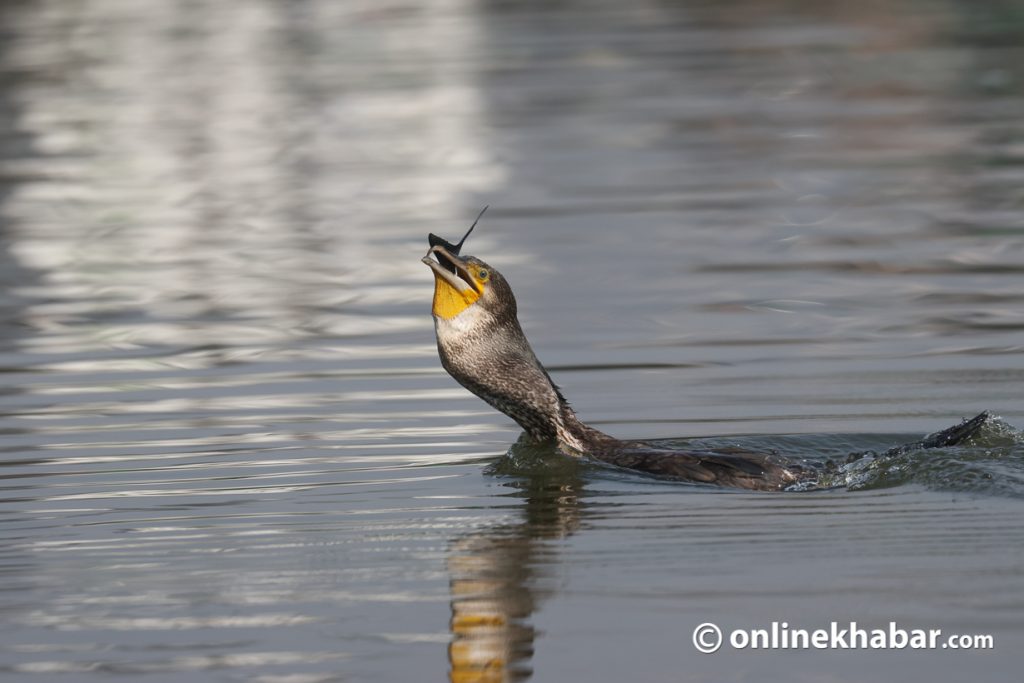
The cormorant is a huge bird, with a wing span of over five feet.
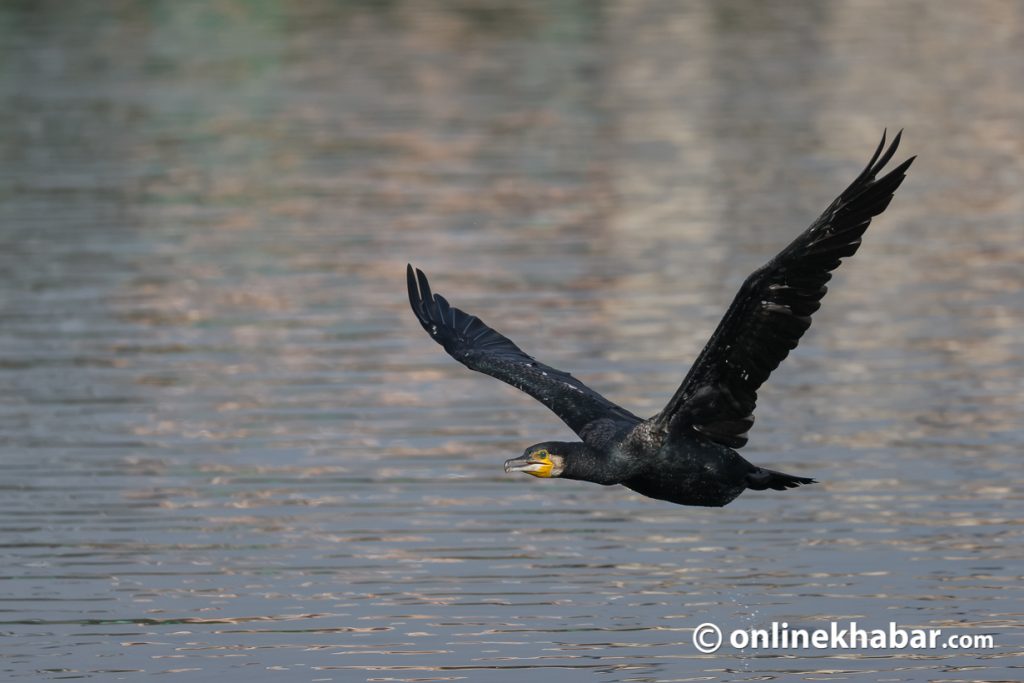
There are also people who have seen great cormorants swallowing small pebbles for extra weight in order to dive more easily, which they regurgitate after feeding.
Great cormorants are often regarded as competitors by fishermen though there are some who use them to catch fish using a neck collar to stop them from swallowing the fish.
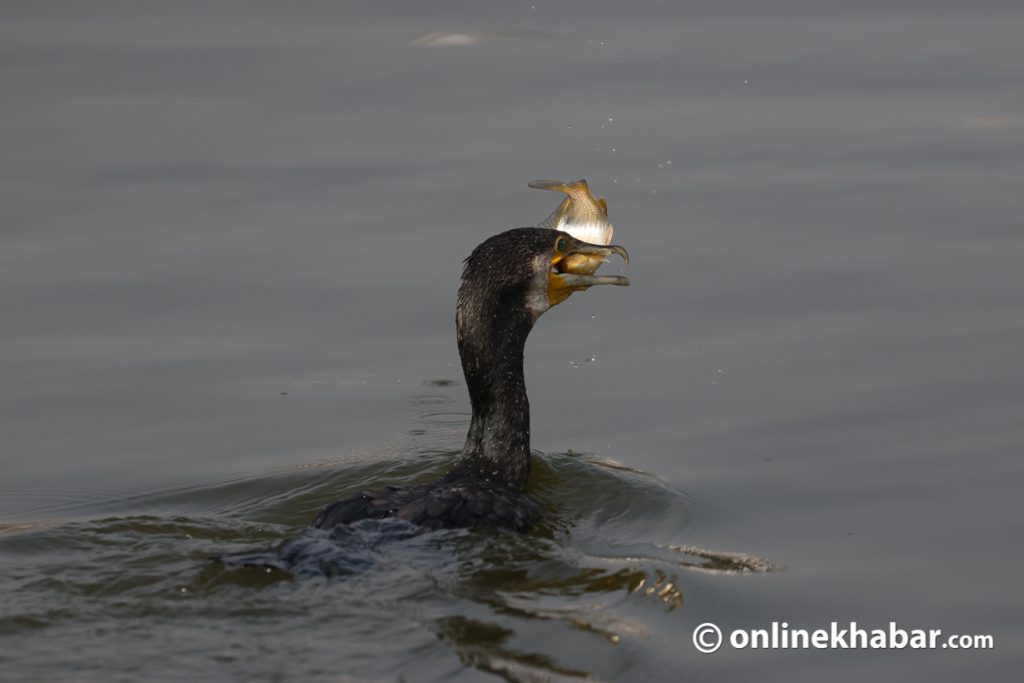
The great cormorants are great swimmers and can dive in limited depths for about a minute. Their paddle-like legs help them swim fast both above and below water.
Their feathers are not waterproof, so they stretch out their wings to dry them off.
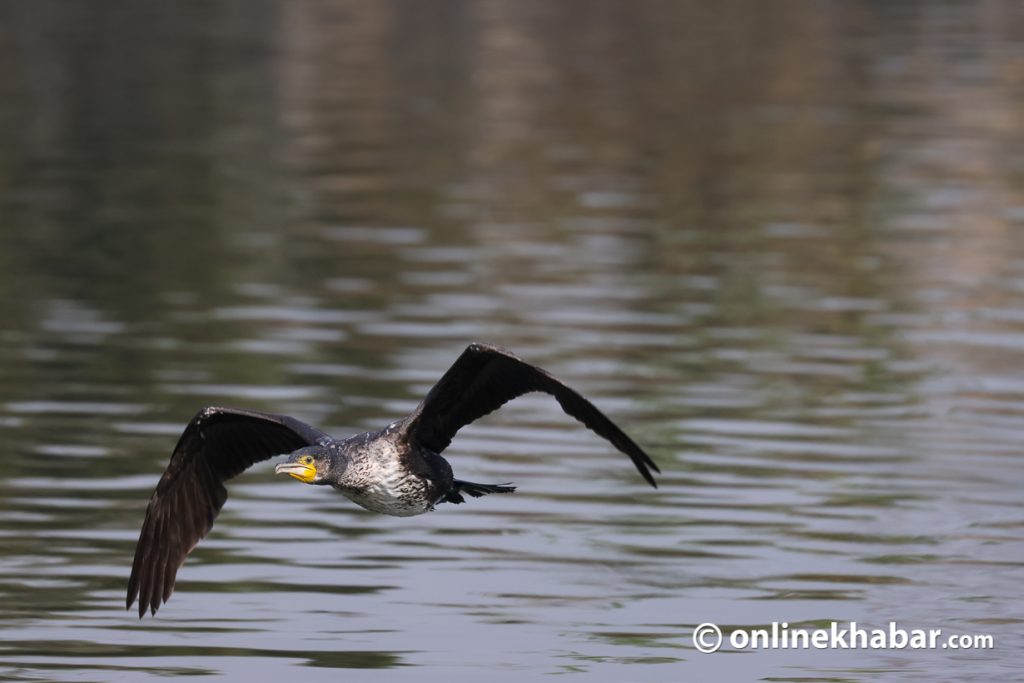
Studies across the world show that the number of great cormorants has increased by over 40 per cent since 1986.
Over the past decade, these birds seem to have moved inland rather than the seas where they were normally seen. Many argue it is the lack of food in the sea that is causing this migration.
It can live up to 25 years.
The post Great cormorants at Taudaha lake on Kathmandu outskirts (Photo feature) appeared first on OnlineKhabar English News.
Comments
Post a Comment